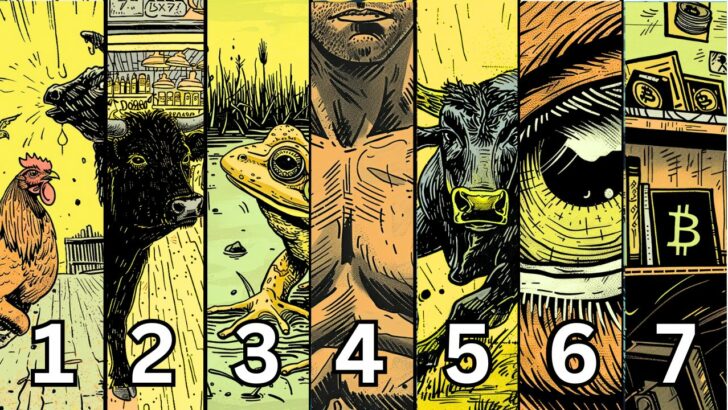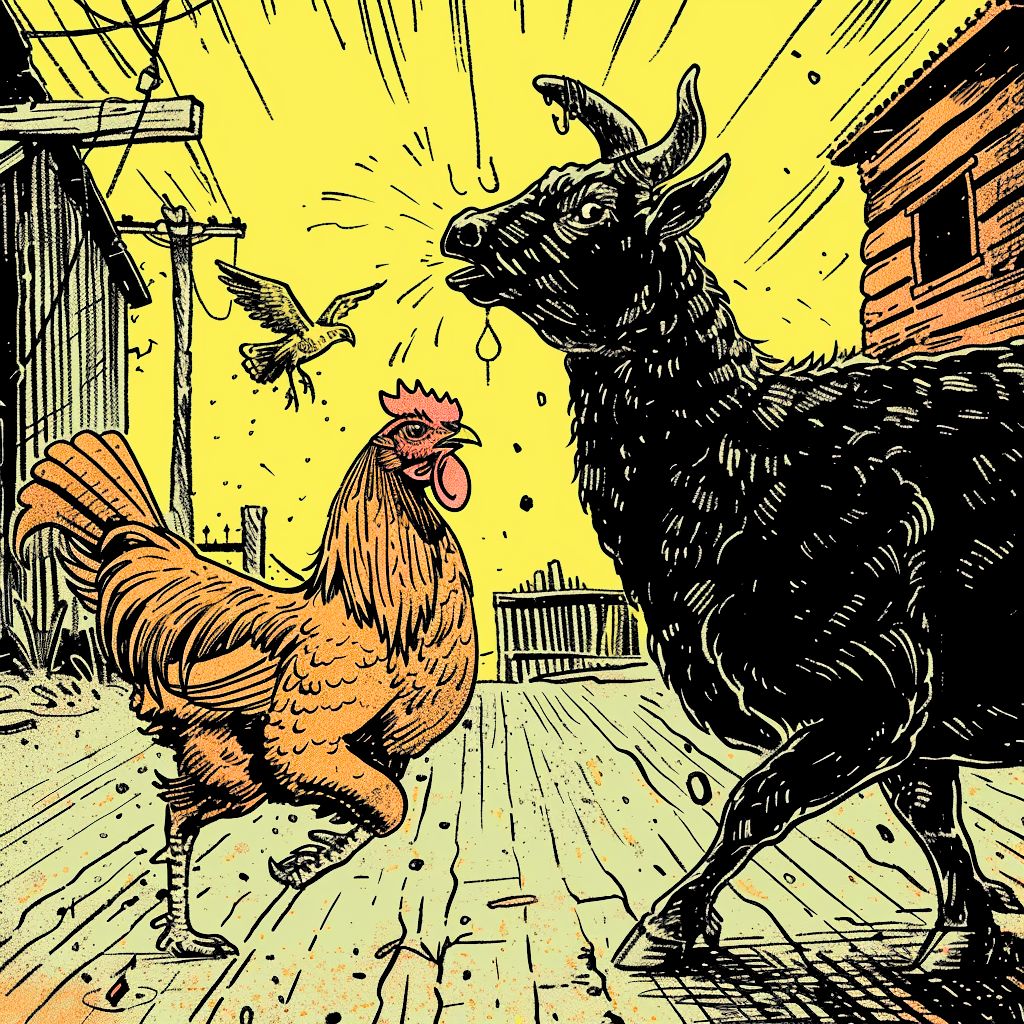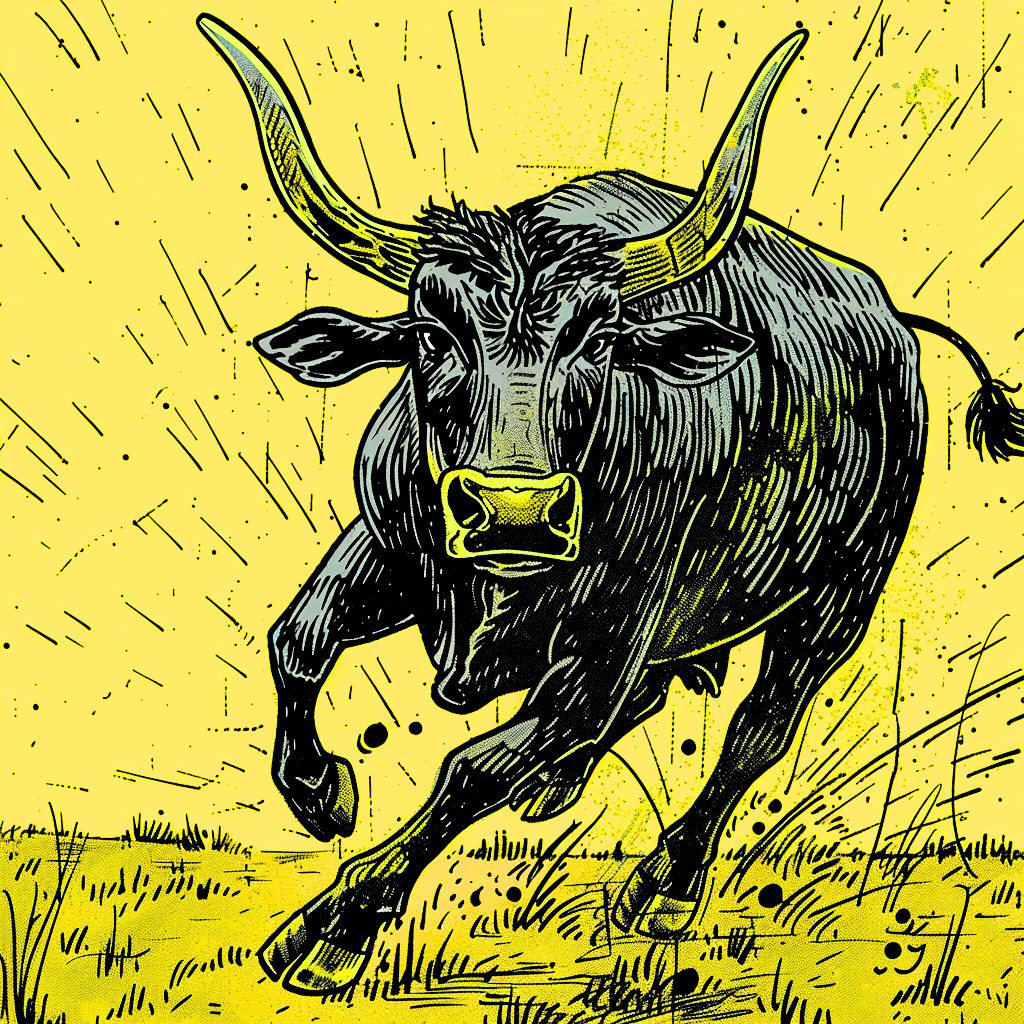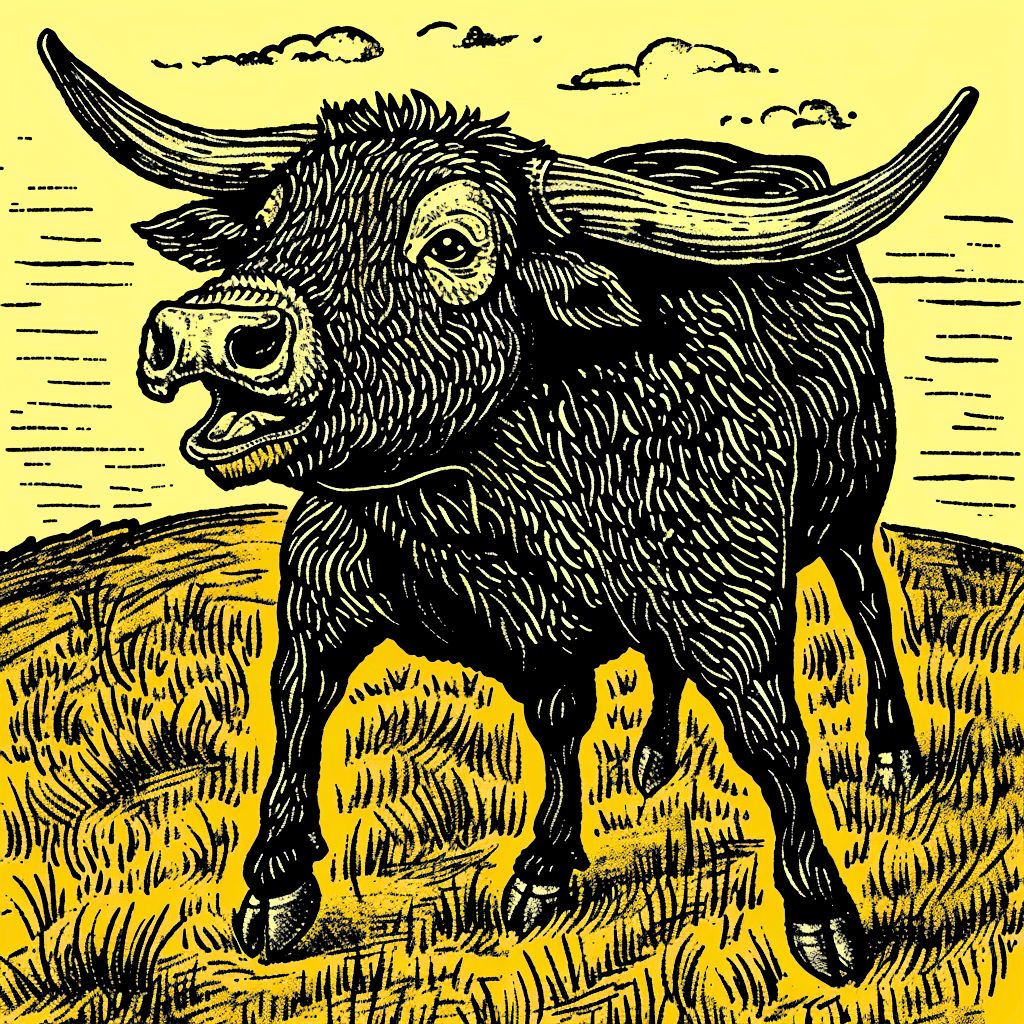Hey there, fellow language aficionados and idiom enthusiasts! Have you ever stopped to ponder the wonderfully weird world of idioms?
You know, those cool phrases that add spice to our conversations and make us wonder who on earth came up with them in the first place?
Well, today, we’re diving headfirst into the wild and woolly world of bull-related idioms!
Buckle up, folks, because we’re about to embark on a hilarious hoof-stomping journey through the linguistic rodeo of expressions inspired by our bovine buddies.
From cock and bull stories to bullish market trends, get ready for a wild ride that’s sure to leave you both entertained and enlightened!
1. Cock and Bull Story
Originating from the vibrant tavern culture of medieval Europe, where travelers and locals would gather to share tales over tankards of ale, the phrase “cock and bull story” reflects a time when storytelling was a cherished pastime.
The term first appeared in English literature in the 17th century and has since become a staple idiom.
This expression conjures imagery that parallels the fanciful boasts of roosters and the exaggerated narratives often woven about bulls’ prowess and adventures.
Such stories were often filled with grandiose details and improbable events, meant more for entertainment than factual accuracy.
Today, “cock and bull story” is used to dismiss accounts that strain credulity or lack veracity.
It’s a gentle rebuke, suggesting that the tale is as fantastical and unbelievable as stories of roosters and bulls engaging in extraordinary feats.
This idiom is used in informal conversations and more formal settings, serving as a lighthearted reminder to approach anecdotes and explanations with a healthy dose of skepticism.
Whether encountered in literature, politics, or everyday discourse, the phrase continues to evoke a sense of whimsy and incredulity, reminding us of the enduring power of storytelling in human communication.
Example 1: Her excuse for being late was nothing short of a cock and bull story involving secret agents and time travel.
Example 2: Don’t believe everything he says; his explanation sounded like a cock and bull story to me.
2. A Bull in a China Shop
The idiom “a bull in a china shop” vividly describes chaos and destruction, invoking the image of a powerful bull let loose among delicate porcelain.
Its origins trace back to the 19th century, likely inspired by the common sight of bulls in rural areas and the fragility of porcelain, particularly prized for its delicacy and value.
The phrase serves as a cautionary metaphor, warning against the consequences of reckless or clumsy behavior in situations requiring finesse and delicacy.
It implies that the presence of such a bull would inevitably lead to damage and chaos, highlighting the importance of grace and careful handling.
Beyond its literal interpretation, “a bull in a china shop” is often used metaphorically to describe individuals or actions that disrupt or damage delicate situations or relationships.
It underscores the need for caution and restraint in navigating sensitive circumstances.
Another similar idiom is “An elephant in a china shop,” which highlights the stark contrast of a large and cumbersome creature in a delicate environment.
Example 1: Bringing him to the art gallery was akin to inviting a bull into a china shop; sculptures trembled in his wake.
Example 2: Let’s tread carefully; we wouldn’t want to resemble a bull in a china shop in such a sensitive negotiation.
3. Bullfrog
The term “bullfrog” describes a person with a deep, booming voice reminiscent of the resonant croak of a bullfrog.
This idiom likely emerged from observing individuals with particularly sonorous voices, drawing a comparison to the distinctive vocalizations of these amphibians.
The imagery of a bullfrog’s croak evokes both humor and admiration, as such voices often command attention and authority.
While the phrase’s origin remains uncertain, it has become a common descriptor in English vernacular.
“Bullfrog” is used affectionately to describe individuals with commanding or authoritative voices, often in contexts where vocal presence is notable or valued.
It celebrates the richness and depth of certain voices, likening them to the powerful calls of nature.
Example 1: His voice, reminiscent of a bullfrog in a serene pond, echoed across the auditorium.
Example 2: The actor’s bullfrog-like voice captivated audiences with its depth and resonance.
4. Bull Neck
“Bull neck” refers to a person with a thick, muscular neck, evoking the image of strength and robustness associated with bulls.
The phrase likely originated from observations of individuals with pronounced neck muscles, reminiscent of the powerful anatomy of these animals.
The idiom underscores physical strength and resilience, as the neck is often regarded as a symbol of power and vitality.
A thick, muscular neck suggests endurance and capability, traits commonly associated with the formidable nature of bulls.
While the phrase’s origin remains unclear, “bull neck” has become a descriptive term in English vernacular, celebrating the physical prowess and resilience of individuals with prominent neck muscles.
Example 1: Despite his advancing years, his bull neck stood out among the crowd, a testament to his strength.
Example 2: The wrestler’s bull neck hinted at the formidable power he wielded in the ring.
5. Bull Run
Originating from the financial world, a “bull run” describes a sustained period of rising stock prices, mirroring the unstoppable charge of a bullish market.
The term traces back to the mid-19th century, during the heyday of stock trading and market speculation in the United States.
The imagery of a bull charging forward symbolizes optimism, confidence, and economic prosperity.
A bull run is characterized by investor enthusiasm, leading to increased buying activity and upward momentum in stock prices.
Positive economic indicators, such as strong corporate earnings, low unemployment rates, and favorable government policies often fuel bull runs.
They signify economic growth and expansion periods, inspiring confidence among investors and businesses alike.
While bull runs can lead to significant gains for investors, they also carry risks of market volatility and speculative bubbles.
Investors must exercise caution and sound judgment during these periods of exuberance to avoid potential downturns.
Example 1: The recent bull run buoyed investor confidence, signaling an era of prosperity in the market.
Example 2: Despite initial skepticism, the bull run persisted, defying expectations and fueling economic growth.
6. Bullseye
Derived from archery, hitting the “bullseye” signifies achieving a perfect or precise aim.
The term originated from the circular target used in archery competitions, with the bullseye at its center representing the highest score.
The imagery of hitting the bullseye evokes feelings of accuracy, focus, and accomplishment. It symbolizes achieving a goal with pinpoint precision, leaving no room for error or deviation.
The term has been used metaphorically to describe success in various endeavors beyond archery.
Whether in business, sports, or personal achievement, hitting the bullseye implies achieving the desired outcome with maximum efficiency and effectiveness.
It denotes a mastery of skills, careful planning, and unwavering determination.
While hitting the bullseye is often associated with triumph and success, it also requires practice, perseverance, and sometimes a bit of luck.
Those who consistently hit the bullseye are admired for their precision and ability to deliver results consistently and with excellence.
Example 1: Her presentation hit the bullseye, capturing the audience’s attention with its clarity and insight.
Example 2: After months of practice, he finally hit the bullseye with his pitch, securing funding for his startup.
7. Bullish
In financial markets, being “bullish” reflects a sentiment of optimism or confidence in the future performance of a stock, market, or economy.
The term originates from the image of a bull, representing strength and upward movement in market prices.
Expectations of rising asset prices and favorable economic conditions characterize the bullish stance.
Bullish investors anticipate positive outcomes and opportunities for growth, which leads to increased buying activity and upward momentum in market trends.
Bullish sentiments can stem from various factors, including strong corporate earnings, favorable economic indicators, and supportive government policies.
Analysts and traders often use the term to describe a positive outlook on specific stocks, sectors, or the market as a whole.
While a bullish stance can lead to profitable investments during periods of market growth, it also carries overconfidence and speculative behavior risks.
Investors must assess market conditions carefully and consider potential challenges and uncertainties.
Example 1: Despite temporary setbacks, analysts remained bullish on the company’s long-term prospects, citing strong fundamentals.
Example 2: Her bullish outlook infused the team with confidence, driving them to pursue ambitious goals and surpass expectations.
Wrangling Words: Wrapping Up the Bull-tastic Adventure!
And there you have it, folks! A romping, stomping roundup of some of the most colorful and downright hilarious bull-related idioms the English language has to offer.
From the chaotic imagery of a bull in a china shop to the precision of hitting the bullseye, these expressions tickle our funny bones and offer fascinating insights into human behavior and communication.
So, the next time you find yourself in a conversation and want to spice things up, why not throw in one of these bull-tastic phrases?
Who knows, you might just find yourself the talk of the town—or at least the pasture! Until next time, keep moo-ving and grooving with the wonderful world of idioms!

Hey fellow Linguaholics! It’s me, Marcel. I am the proud owner of linguaholic.com. Languages have always been my passion and I have studied Linguistics, Computational Linguistics and Sinology at the University of Zurich. It is my utmost pleasure to share with all of you guys what I know about languages and linguistics in general.











